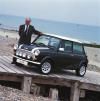John Cooper – How He Revolutionised Motorsport and Inspired Mini Specialists
The History Of The Mini Cooper
February 28, 2020
Re-Launching The ‘Cooper Car Company’ In Association With Mini Sport
February 4, 2020
1965 - Mini Cooper Works Team wins in Circuit Racing
August 12, 2019
The Legends Behind The Success of The Mini Cooper
December 18, 2019
The History Of The Mini Cooper
February 28, 2020
Re-Launching The ‘Cooper Car Company’ In Association With Mini Sport
February 4, 2020
The Legends Behind The Success of The Mini Cooper
December 18, 2019
Categories
Monthly Archive
Topics
Tags





